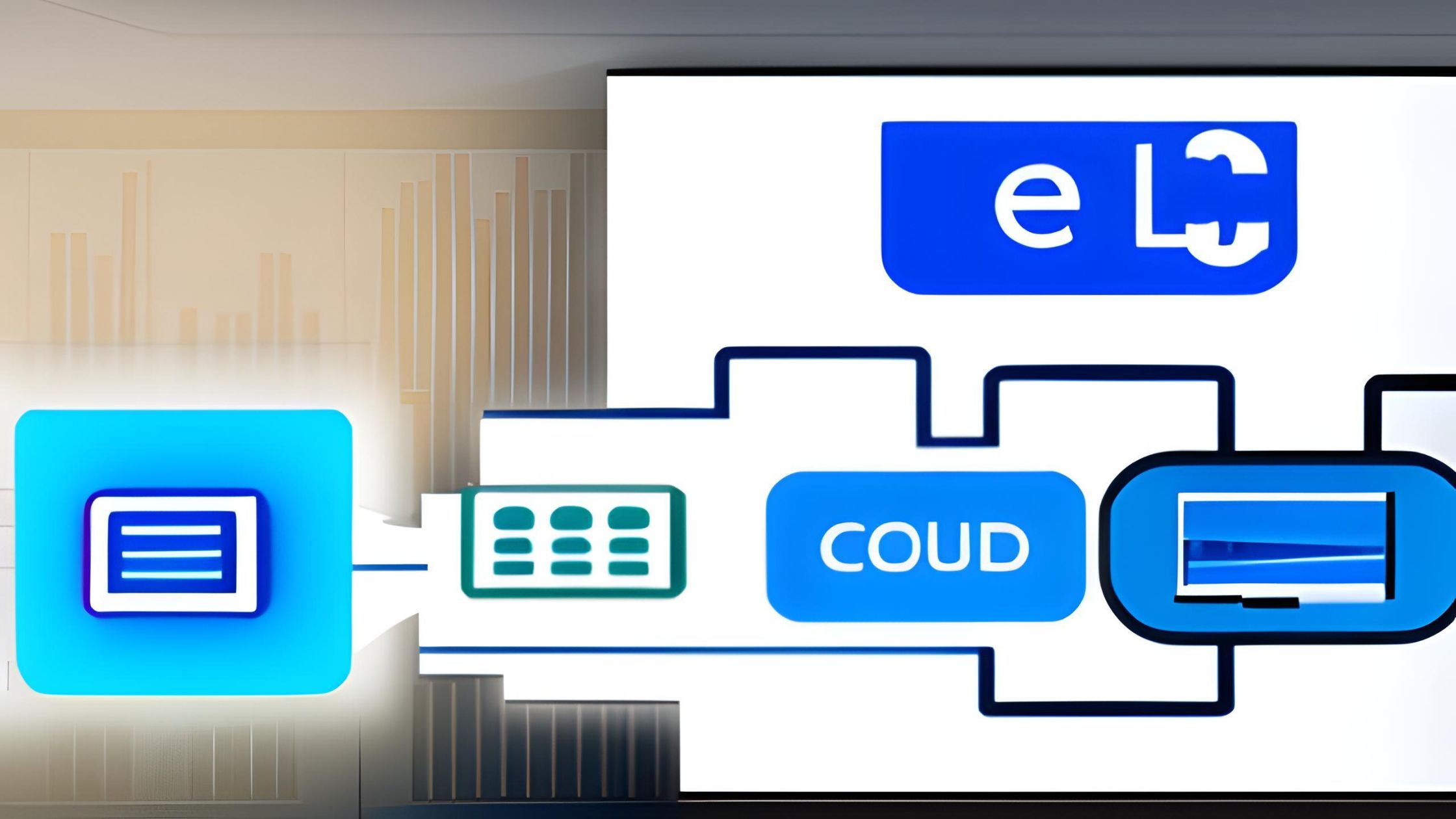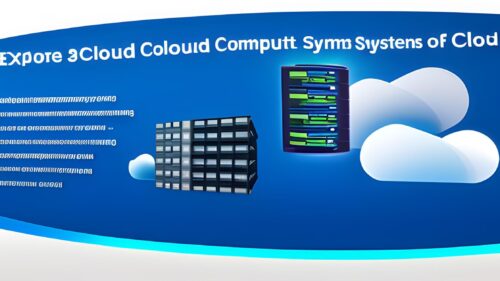EEL6871 – Cloud Computing Systems Management: Navigating the Digital Sky
1. Introduction: Embracing Cloud Computing in the Digital Age | EEL6871 – Cloud Computing Systems Management
In today’s digitally driven landscape, cloud computing has emerged as a cornerstone of technological innovation. Cloud computing systems management, exemplified by the course EEL6871, has become a vital discipline for efficiently harnessing the power of the cloud. This article delves into the realm of cloud computing systems management, exploring its significance, challenges, strategies, and future prospects.
2. The Foundations of Cloud Computing
2.1 Understanding Cloud Computing
Cloud computing, in simple terms, involves the delivery of computing services over the Internet. These services include storage, servers, databases, networking, software, analytics, and more. It eliminates the need for physical infrastructure and empowers businesses and individuals to access and utilize resources remotely.
2.2 Key Benefits of Cloud Computing: Unveiling the Power of the Cloud
Cloud computing has revolutionized the way businesses and individuals access and utilize technology resources. Its transformative impact extends across various sectors, offering a plethora of advantages that drive efficiency, innovation, and growth. In this section, we’ll delve deeper into the key benefits of cloud computing that make it an indispensable tool in today’s digital landscape.
2.2.1. Scalability and Flexibility
One of the most significant benefits of cloud computing is its inherent scalability and flexibility. Traditional on-premises infrastructure often requires significant investments to accommodate peak loads. In contrast, cloud services can be easily scaled up or down based on demand. This elasticity empowers businesses to quickly respond to changes in workload without overprovisioning resources.
2.2.2 Cost-Efficiency
Cloud computing operates on a pay-as-you-go model, allowing organizations to pay only for the resources they use. This eliminates the need for upfront capital investments in hardware and infrastructure. The cost-effectiveness of cloud services is particularly advantageous for startups and small businesses, enabling them to access sophisticated technology without straining their budgets.
2.2.3 Global Accessibility
The cloud transcends geographical barriers, enabling users to access data and applications from anywhere with an internet connection. This level of accessibility fosters collaboration among remote teams, facilitates remote work, and empowers businesses to expand their reach across borders without the constraints of physical infrastructure.
2.3.4 Rapid Deployment
Cloud services can be provisioned and deployed within minutes, compared to the time-consuming process of setting up and configuring on-premises infrastructure. This rapid deployment accelerates the development and testing of applications, enabling businesses to bring products and services to market faster.
2.3.5 Reliability and Redundancy
Cloud service providers often offer robust data centers with redundant systems, ensuring high availability and minimizing downtime. This level of reliability is challenging to achieve with traditional infrastructure, making cloud services an attractive option for mission-critical applications that demand continuous uptime.
2.3.6 Automatic Updates and Maintenance
Cloud service providers handle the maintenance and updates of the underlying infrastructure and software. This frees businesses from the burden of managing patches and upgrades, allowing them to focus on innovation and core activities rather than routine maintenance tasks.
2.3.7 Resource Optimization
Cloud platforms offer tools and analytics to monitor and optimize resource usage. This helps organizations identify inefficiencies, right-size resources, and optimize costs. Additionally, automated scaling ensures that resources are allocated optimally based on workload requirements.
2.3.8 Disaster Recovery and Data Security
Cloud providers implement robust security measures to protect data, including encryption, firewalls, and multi-factor authentication. Additionally, cloud services offer reliable disaster recovery solutions, allowing businesses to swiftly recover data and applications in the event of unforeseen disruptions.
2.3.9 Environmental Impact
Cloud computing can contribute to reducing the environmental footprint of businesses. The efficient utilization of resources in cloud data centers and the ability to scale down when not in use can lead to energy savings and a smaller carbon footprint compared to traditional data centers.
2.3.10 Innovation and Agility
The accessibility of cutting-edge technologies and services in the cloud promotes innovation. Businesses can experiment with new solutions and technologies without committing to large investments. Cloud computing’s agility empowers organizations to rapidly respond to market changes and embrace emerging trends.
2.3.11 Conclusion: Empowering the Digital Journey
In conclusion, the benefits of cloud computing are profound and far-reaching. From cost-efficiency to innovation acceleration, the cloud has reshaped the landscape of technology and business operations. As organizations continue to harness the power of cloud computing, they unlock new opportunities for growth, efficiency, and success in the digital age.
EEL6871 – Cloud Computing Systems Management
3. Navigating EEL6871: Exploring Cloud Computing Systems Management
3.1 An Overview of EEL6871
EEL6871 is a comprehensive course designed to equip students with the skills to effectively manage cloud computing systems. The course covers fundamental concepts, advanced techniques, and practical applications in the realm of cloud systems management.
3.2 Challenges in Cloud Systems Management
Managing cloud systems comes with its challenges. Ensuring data security, maintaining optimal performance, and integrating diverse platforms are some hurdles that professionals must overcome. EEL6871 addresses these challenges head-on, fostering expertise in tackling real-world cloud management issues.
3.3 Strategies for Effective Cloud Management: Navigating the Cloud with Finesse
Effectively managing cloud resources is essential to maximize their potential and ensure optimal performance. Cloud environments can be complex and dynamic, requiring thoughtful strategies to streamline operations, enhance security, and optimize costs. In this section, we’ll delve into key strategies for efficient cloud management that EEL6871 equips you with.
3.3.1 Automation and Orchestration
Automation involves using scripts, templates, and tools to automate routine tasks and processes in the cloud. Orchestration takes it a step further by coordinating multiple automated tasks to achieve complex workflows. EEL6871 emphasizes the importance of automation and orchestration in reducing human error, enhancing efficiency, and ensuring consistency across cloud operations.
3.3.2 Proactive Monitoring
Monitoring the performance and health of cloud resources is crucial for early detection of issues and timely response. EEL6871 covers advanced monitoring techniques, including real-time metrics, logs analysis, and predictive analytics. Proactively identifying and addressing bottlenecks, anomalies, and potential security threats helps maintain optimal cloud performance.
3.3.3 Resource Optimization
Cloud resources should be provisioned and managed based on actual usage requirements. EEL6871 teaches you how to analyze resource utilization patterns, identify underutilized or over-provisioned resources, and right-size instances. This strategy leads to cost savings while ensuring that applications perform efficiently.
3.3.4 Security and Compliance
EEL6871 places a strong emphasis on cloud security. You’ll learn about implementing robust access controls, encryption mechanisms, and security best practices. Managing compliance with industry regulations and data protection standards is also a critical aspect of cloud management covered in the course.
3.3.5 Disaster Recovery Planning
Unforeseen incidents can disrupt cloud services. EEL6871 guides you through creating comprehensive disaster recovery plans. These plans include regular backups, data replication across regions, and predefined procedures to restore services quickly in the event of a catastrophe.
3.3.6 Cost Management and Optimization
Managing cloud costs involves more than just paying for what you use. EEL6871 educates you on cost allocation, budget tracking, and utilizing cost management tools provided by cloud service providers. This knowledge helps organizations optimize spending and avoid unnecessary expenses.
3.3.7 Hybrid and Multi-Cloud Strategy
EEL6871 recognizes the growing trend of hybrid and multi-cloud deployments. These strategies involve using multiple cloud providers or combining cloud resources with on-premises infrastructure. You’ll learn about the challenges and benefits of these approaches and how to effectively manage and integrate resources across different environments.
3.3.8 DevOps Integration
DevOps principles align development and operations teams to enhance collaboration and delivery speed. EEL6871 introduces you to DevOps practices, including continuous integration, continuous delivery, and automated testing. Integrating DevOps methodologies with cloud management ensures seamless deployment and updates.
3.3.9 Performance Optimization
Ensuring that applications and services run smoothly is paramount. EEL6871 equips you with performance optimization strategies, including load balancing, caching mechanisms, and content delivery networks (CDNs). These techniques enhance user experience and minimize latency.
3.3.10 Continuous Learning and Adaptation
Cloud technologies evolve rapidly. EEL6871 emphasizes the importance of continuous learning and adaptation. Staying updated with the latest cloud trends, tools, and services equips you to make informed decisions and innovate within your cloud environment.
3.3.11 Conclusion: Mastering the Cloud Management Landscape
In conclusion, effective cloud management requires a strategic approach that spans automation, monitoring, security, cost optimization, and more. EEL6871 equips you with a comprehensive toolkit to navigate the complexities of cloud management successfully. By implementing these strategies, you’ll not only optimize cloud performance but also position yourself as a proficient cloud systems manager in an ever-evolving digital landscape.
EEL6871 – Cloud Computing Systems Management
4. The Future of Cloud Computing Systems Management
4.1 Emerging Trends in Cloud Management
As technology evolves, so do the trends in cloud computing systems management. Edge computing, serverless architecture, and AI-driven automation are revolutionizing how cloud systems are managed. EEL6871 ensures students are prepared to embrace these trends and stay at the forefront of the field.
4.2 Career Opportunities: Navigating Your Path in Cloud Computing Systems Management
The realm of cloud computing systems management opens up a diverse range of exciting and lucrative career opportunities for individuals with the right skills and expertise. As organizations increasingly migrate their operations to the cloud, the demand for professionals who can effectively manage and optimize cloud resources continues to grow. Here are some prominent career paths that await graduates of EEL6871 and aspiring cloud enthusiasts:
4.2.1 Cloud Architect
As a cloud architect, you will be responsible for designing and implementing complex cloud infrastructure solutions. You’ll collaborate with various stakeholders to assess business requirements, select appropriate cloud services, and create architectural blueprints that ensure scalability, security, and reliability.
4.2.2 Cloud Solutions Engineer
Cloud solutions engineers focus on deploying and maintaining cloud environments. They work closely with clients to understand their needs, configure cloud services, and ensure smooth integration. This role requires a deep understanding of different cloud platforms and the ability to troubleshoot issues effectively.
4.2.3 Cloud Security Specialist
In an age of data breaches and cyber threats, cloud security specialists play a critical role in safeguarding sensitive information stored in the cloud. They develop security protocols, monitor for vulnerabilities, implement encryption, and ensure compliance with industry regulations.
4.2.4 DevOps Engineer
DevOps engineers bridge the gap between development and IT operations. In cloud computing, they streamline the deployment process, automate tasks, and facilitate continuous integration and continuous delivery (CI/CD) pipelines. DevOps engineers ensure that applications run smoothly in cloud environments.
4.3.5 Cloud Data Engineer
Cloud data engineers focus on managing and optimizing data pipelines in the cloud. They design and implement data architectures, extract, transform, and load (ETL) processes, and ensure data quality and availability for analytics and decision-making.
4.3.6 Cloud Service Manager
Cloud service managers oversee the relationship between cloud service providers and their clients. They ensure that service level agreements (SLAs) are met, manage client expectations, and act as a liaison to resolve any issues or concerns.
4.3.7 Cloud Consultant
Cloud consultants provide expert advice to businesses seeking to adopt cloud technologies. They assess current IT infrastructures, recommend cloud migration strategies, and guide organizations through the process of transitioning to the cloud.
4.3.8 Cloud Product Manager
Cloud product managers are responsible for developing and managing cloud-based products and services. They collaborate with development teams, gather user feedback, and make strategic decisions to enhance and expand cloud offerings.
4.3.9 Cloud Operations Manager
Cloud operations managers oversee the day-to-day activities of cloud environments. They monitor performance, manage resources, handle incidents, and ensure that applications and services run smoothly and efficiently.
4.3.10 Cloud Trainer or Educator
For those passionate about sharing their expertise, a career as a cloud trainer or educator could be fulfilling. These professionals design and deliver training programs, workshops, and courses to educate individuals and teams about cloud technologies and best practices.
4.3.11 Conclusion: Forging Your Path in the Cloud
The world of cloud computing systems management is ripe with possibilities, offering a multitude of roles that cater to diverse skill sets and aspirations. Whether you’re drawn to architecture, security, engineering, or consulting, EEL6871 equips you with the knowledge and practical skills needed to excel in your chosen cloud career. So, as you embark on this journey, remember that the cloud is not just a technology but a realm of boundless opportunities awaiting your exploration and innovation.
EEL6871 – Cloud Computing Systems Management
5. Conclusion: Soaring Toward Technological Excellence
In the ever-expanding realm of cloud computing systems management, the journey is one of perpetual growth, innovation, and transformation. As we conclude our exploration of EEL6871 and the captivating world of cloud management, it’s evident that this field holds the key to unlocking boundless technological potential. Let’s recap the significant takeaways from this exhilarating journey:
5.1 Mastering the Cloud Landscape
EEL6871 serves as your compass, guiding you through the intricacies of cloud computing systems management. From understanding the foundational concepts to delving into advanced strategies, this course empowers you to navigate the cloud landscape with confidence and proficiency.
5.2 Tackling Real-World Challenges
Cloud systems management is not without its challenges, but armed with the knowledge gained from EEL6871, you’re equipped to conquer them. Whether it’s ensuring data security, optimizing resource utilization, or orchestrating complex workflows, you’re prepared to tackle real-world issues head-on.
5.3 Embracing Innovation and Trends
In the dynamic world of technology, innovation is paramount. EEL6871 introduces you to emerging trends like edge computing, serverless architecture, and AI-driven automation. Armed with this insight, you’re poised to embrace technological shifts and harness them to drive your cloud environment to new heights.
5.4 Crafting Your Path
The cloud computing landscape presents a plethora of captivating career opportunities. From cloud architects and security specialists to cloud consultants and more, EEL6871 equips you with the skills needed to carve your unique path in this ever-evolving field.
5.5 Continual Learning and Evolution
As our technological journey is unceasing, so too is the process of learning and adaptation. EEL6871 instills in you the understanding that staying at the forefront of cloud computing systems management requires ongoing curiosity, exploration, and a commitment to continual growth.
In the grand tapestry of technology, cloud computing systems management is a vibrant thread that weaves through innovation, efficiency, and limitless potential. As you step forward, armed with the insights and expertise bestowed by EEL6871, remember that the cloud isn’t just a repository of data and applications—it’s a canvas for your ingenuity, a platform for your achievements, and a gateway to technological excellence.
So, with a heart full of ambition and a mind teeming with possibilities, you are now ready to soar toward technological excellence, shaping the future of cloud computing systems management with every step you take.
Frequently Asked Questions (FAQs)
The journey doesn’t end here. Explore some common queries related to cloud computing systems management and EEL6871:
Q1: What is cloud computing systems management?
A: Cloud computing systems management involves overseeing and optimizing cloud-based resources and services to ensure optimal performance and efficiency.
Q2: How does EEL6871 prepare students for real-world cloud management challenges?
A: EEL6871 covers practical strategies, hands-on experiences, and the latest trends in cloud management to equip students with practical skills.
Q3: What are the benefits of pursuing a career in cloud systems management?
A: Cloud systems management offers diverse career opportunities, high demand, and the chance to work on cutting-edge technologies.
Q4: What role does automation play in cloud management?
A: Automation streamlines routine tasks, enhances efficiency, and reduces the risk of human errors in managing cloud resources.
Read our other articles




1 thought on “EEL6871 – Cloud Computing Systems Management: Navigating the Digital Sky”